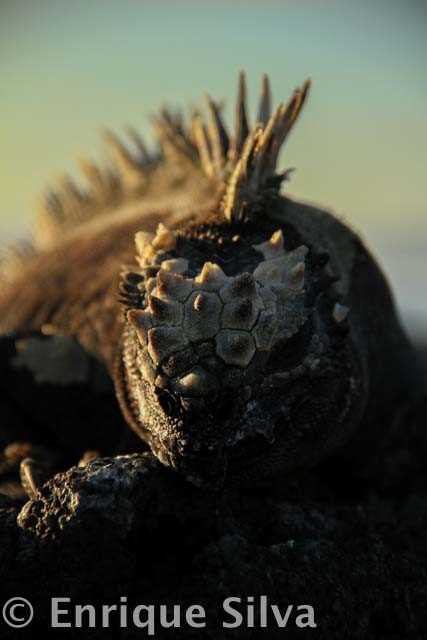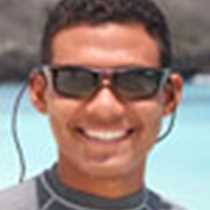Isabela is the biggest island in the Galapagos archipelago and today we visited it during the morning. As the sun started to come out in the sky we navigated next to the island to see its monumental volcanoes. Eventually we reached Ecuador volcano where the equatorial line divides south to north and here we had our traditional crossing celebration as the captain slowed the boat to see the latitude on the GPS.
Later we arrived to Punta Vicente Roca, the lower lip of the sea horse-shaped island. Just when the National Geographic Islander was dropping anchor, a group of bottlenose dolphins came close to welcome us. We visited the shoreline using Zodiacs that took us close to the wildlife. The day could not disappoint as we found so many Pacific green sea turtles coming to the surface for air. Also there were marine iguanas foraging on the seaweed at the tideline. The usual sea birds, like Nazca and Blue footed boobies, were seen and today the surprise was the number of sunfish around the coast that were spotted by the diagonal fins. Later we came back and got suited up to get in the water. The experience of being completely surrounded by sea turtles, fish, and sea lions could not be topped by anything else today.
Later in the day we navigated one more time to Punta Espinoza on Fernandina Island. This is the youngest of all the islands in the archipelago. From the moment we set foot on this place it was like we were transported back in time when the earth was barren and reptiles ruled. This site has hundreds of marine iguanas basking in the sun right next to each other. Also as the tide was going down, sea turtles were trying to get trapped in these warm water tidal pools. Flightless cormorants nesting and a couple of humpback whales in the distance were also part of the show offered up by Mother Nature today.
It is hard to believe we’ve seen so much and it is only the beginning of a very exciting expedition in the famous Galapagos Islands.







